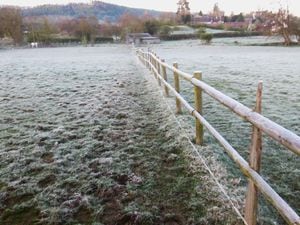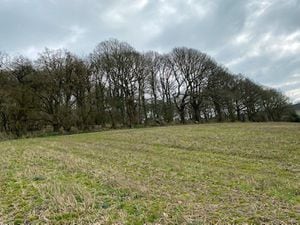Shropshire train and tractor near miss features in rail safety review
A case where a train came within “45 to 90 metres” of colliding with a tractor in Shropshire because of an error from a signaller, is part of a major report into how to avoid incidents in the future.

The near-miss, which happened at New House Farm, between Church Stretton and Shrewsbury, is one of five case studies in a Rail Accident Investigation Branch report into human errors in signalling.
The report says a tractor driver called the signaller, stationed at Network Rail’s Marshbrook signal box, asking for the gates at New House Farm to be opened. The signaller believed the driver was calling from a different location and granted the request.
The RAIB report says the signaller underwent retraining following the incident, and the control layout at Marshbrook was changed.
The preface to the report says, since it was set up in 2005, RAIB has “investigated numerous incidents in which signaller decision-making has been pivotal”.
It says: “In light of these, we undertook a class investigation into what affects those decisions, recognising that they may be influenced by a variety of systemic factors.”
Summarising the Shropshire case, it says: “At 8.37pm on June 14, 2015, the signaller at Marshbrook signal box received a telephone call from a tractor driver requesting permission to cross at New House Farm UWC [user-worked crossing].”
At UWCs users with vehicles or farm animals are required to contact the signaller by telephone before crossing.
Attention
“The signaller checked for trains in the area and granted the driver permission to cross,” it adds.
“Maximum permitted speed for the train at this location was 90mph.
“The signaller believed the tractor driver was calling from Woodlands UWC, a crossing about six miles away from New House Farm UWC.
“The industry investigation report identified the causes of this incident to be associated with the signaller’s attention and safety-critical communications.”
“The report further observed that the layout of the buttons on the telephone concentrator unit in the signal box, which indicate where a crossing user is calling from, was potentially confusing.”
Network Rail employs 5,200 signalling staff at approximately 500 signal boxes and centres around Britain.
The RAIB report also covers an incident in Leicestershire where track workers came within “two to three seconds” of being hit by a 100mph passenger train, a near-miss involving two trains near Stockport, a train passing through a level crossing in Lincolnshire before it had fully closed and a pedestrian becoming trapped inside a crossing’s barriers in London.
The report identifies five factors behind these and similar incidents. Network Rail’s “management of signaller workload does not fully reflect the complex cognitive demands of modern signalling centres” and signallers themselves are “not consistently involved” in decisions about new equipment and processes, it says.
“There are shortcomings in competence management arrangements for signallers”, it adds, “policies and training do not significantly account for the information, strategies and knowledge used by experienced signallers” and “local management structures adversely affect the competence, management and professional development of signallers”.





